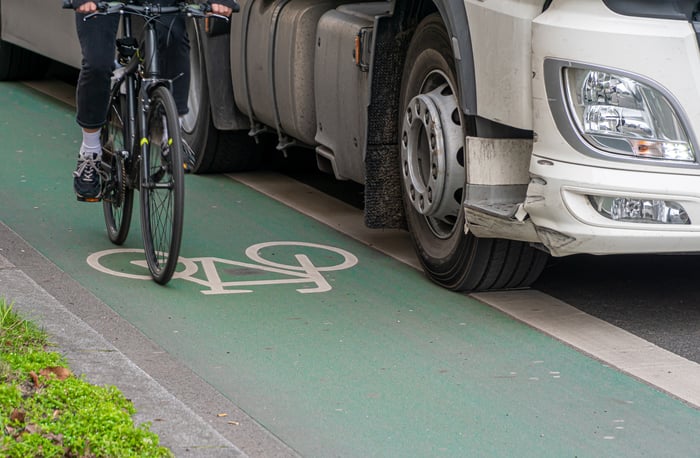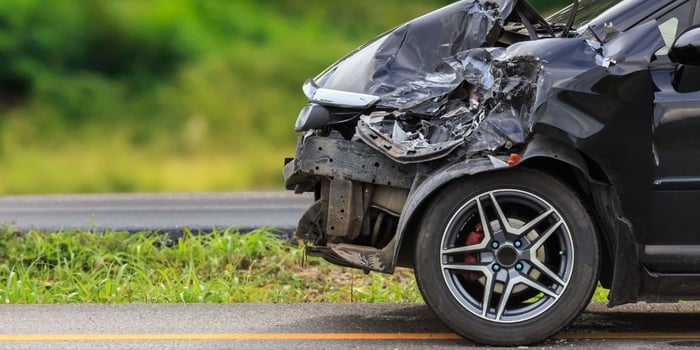
Table of Contents
For too long societies around the world have experienced traffic collision deaths and serious injuries as an unfortunate but unavoidable part of life. However, a paradigm shift is occurring, and it’s called Vision Zero.
Vision Zero is more than just a catchy slogan; it’s a bold and transformative strategy that challenges the very notion of road safety. It was conceived with a simple, yet powerful, objective: to completely eliminate all traffic collision deaths and serious injuries
In today’s blog, we’re diving deep into the Vision Zero initiative. We’ll explore its origins, key principles, why it’s gaining momentum across the globe, and some of the technologies DiCAN offers that can help make our streets safer for all road users.
What is Vision Zero?
At its core, Vision Zero is a ground-breaking approach to road safety that rejects the notion that traffic fatalities and serious injuries are inevitable consequences of modern life. Rather, it challenges us to target the seemingly unattainable: zero deaths and zero serious injuries on our roads.
The philosophy behind Vision Zero is that human beings aren’t perfect, and the road system should reflect this by ensuring these inevitable mistakes don’t result in severe injuries or fatalities. This includes system designers and policymakers improving our roadways, the policies surrounding them (such as speed management), as well as other related systems to minimize the severity of collisions.
Vision Zero was first implemented in Sweden in 1999. With great success internationally, the transformative approach to safety is now making its way through cities and communities across North America.
The Results of Vision Zero
Vision Zero has received international recognition and was acknowledged by the World Health Organization as an effective policy to prevent road traffic injury in 2004.
Sweden made its Vision Zero commitment more than 20 years ago and as a result:
- Traffic deaths per 100,000 inhabitants fell by 68 percent between 2000 and 2019.
- Road deaths of children under 7 have plummeted: in 2012, only 1 was killed, compared with 58 in 1970.
More recently in 2015, Edmonton became the first Canadian city to take the Vision Zero approach. Between 2015 and 2021, traffic-related fatalities dropped by 50 percent and serious injuries dropped by 32 percent, according to the City of Edmonton.
Why Canada Needs Vision Zero
In 2021 alone, 1, 768 Canadians tragically lost their lives on the road, and thousands more suffered life-altering injuries.
The term “accident” fails to capture the preventable nature of these incidents. It’s high time for Canada to embrace the Vision Zero initiative.
With its rich history of innovation and inclusivity, Canada is uniquely positioned to adopt this strategy, emphasizing a proactive approach to road safety that can save countless lives. Vision Zero aligns with our nation’s values, aiming to protect and preserve the lives of its citizens, foster sustainable communities, and promote a sense of shared responsibility.
Vision Zero is not just a strategy– it’s a promise of safer streets, healthier communities, and a brighter tomorrow for all of Canada.
DiCAN’s Safe Solutions to Achieve Vision Zero
Vision Zero requires the work of many to achieve its shared goal of zero fatalities and severe injuries.
DiCAN is proud to do its part by offering several safe solutions designed for commercial fleets of all sizes. From onboard camera systems and obstacle detection to telematics, we offer several solutions that support the focus of Vision Zero initiatives toward traffic collision deaths and severe injuries.
On-Board Camera Systems
Non-driver fatalities continue to rise across North America. Since 2010 in the U.S., traffic-based cyclist fatalities have increased by 25 percent. Over the same period, pedestrian deaths rose to a startling 45 percent.
While both drivers and vulnerable road users (VRUs) could benefit from exercising greater caution, the only way to practically increase safety is to explore technology that creates stronger situational awareness.
With Brigade camera systems drivers can increase visibility and eliminate blind spots, significantly improving safety for all road users. From Camera Monitor Systems with vehicle-mounted CCTV cameras to systems providing a 360-degree Bird’s eye view, managing blind spots with Brigade is one-way fleets can prevent traffic collisions and achieve Vision Zero.
Obstacle Detection Systems
According to the National Highway Traffic Safety Administration, more than 500,000 blind spot truck accidents occur each year. Add the province’s winter weather known to hinder visibility, and you have a recipe for disaster.
While the risk can be lessened with the use of passive systems such as mirrors and cameras, these still require driver input to spot objects or people– and by the time this happens, it may be too late.
That’s where obstacle detection systems come in. Vital to maintaining the highest road safety standards, these safety systems alert drivers to any obstructions in their path through the provision of audible alerts and warning sounds. They provide a second set of eyes for the driver, who can then take immediate action to avoid hitting any obstacles in their path.
Backsense® Radar Obstacle Detection is a revolutionary radar sensor system designed to detect both stationary and moving objects on both on and off-road applications. Using a 5-stage audible and easy-to-read visual display, the system informs the driver of the distance between the vehicle and any road obstacle, greatly reducing the risk of crashes.
Telematics
Telematics can also be used to monitor and encourage safer driving behaviours and maximize road user compliance– just look at New York City.
Seven years since New York launched its Vision Zero initiative, and the City has made great strides toward eliminating traffic fatalities and injuries. According to its “Vision Zero: Year 7 Report,” pedestrian deaths are 37 percent lower and 2020 became the first year on record with less than 100 pedestrian deaths.
To achieve these safety goals the city implemented a wide array of tactics, but one has been directly tied to its success: telematics.
New York City has installed the Geotab solution in 23,000 of its 30,000 fleet vehicles (12,000 City fleet units and 11,000 school buses). And there’s a clear reason for this.
The real-time monitoring that Geo-tab provides can be incredibly useful for fleets and city stakeholders alike. From monitoring risky driving behaviours like speeding and harsh braking to delivering information about potholes and anomalies that affect our roads, to vehicle and driver safety, telematics brings us one step closer to Vision Zero.
Achieve Vision Zero With DiCAN’s Safe Solutions
With cutting-edge safe solutions like camera monitoring systems, obstacle detection and telematics, DiCAN offers a proactive approach to road safety that aligns perfectly with Vision Zero’s key principles.
We have engaged with globally recognized product providers and work with our client-focused team members to bring these solutions to you where you are on-site. From surveying your application requirements, provisioning products and installation to training and support, we bridge you with safe solutions to a successful partnership. These technologies are not only key in managing fleet safety but also in contributing to a safer and more secure environment for all.
Contact us today to learn more about our commercial fleet safety solutions and how they can be a part of your fleet’s Vision Zero solution.


.png?length=700&name=image%20(207).png)


.png?length=700&name=image%20(232).png)